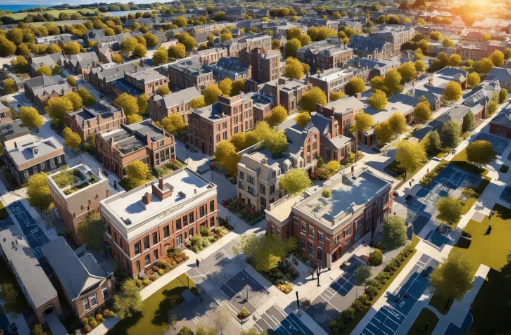
Understanding the Impact of Town Planning
Town planning, also known as urban planning, is essential for the orderly development and management of cities and towns. It involves the technical and political process of regulating the use of land and design of the urban environment, including air, water, and the infrastructure passing into and out of metropolitan areas. This discipline plays a vital role in shaping not just the physical layout of communities but also their social, economic, and environmental dynamics.
The Foundations of Modern Town Planning
The concept of town planning has been around for centuries, evident in the well-ordered streets of ancient Rome and the strategic layouts of medieval cities. However, in the 20th century, town planning emerged as a professional field, spurred by the need to address the health hazards and chaotic development of the Industrial Revolution. Planners today draw on a rich legacy of practices and principles to guide their work, aiming to create harmonious and functional communities.
Key Aspects of Effective Town Planning
Balancing Growth and Sustainability
One of the primary challenges in town planning is balancing the needs of growth with the imperative of sustainability. As cities expand, they face pressures such as traffic congestion, pollution, and loss of green spaces. Effective town planning addresses these issues by integrating public transport systems, promoting energy-efficient buildings, and preserving natural areas within urban settings. These initiatives improve residents’ quality of life and ensure that urban development does not compromise the environment for future generations.
Enhancing Community Well-Being
Town planning significantly influences community well-being by designing environments that promote healthy living and social interaction. This includes the creation of parks, recreational facilities, and community centres that offer residents spaces to relax, play, and come together. Additionally, ensuring that neighbourhoods are safe and accessible for all, including older people and people with disabilities, is crucial to inclusive town planning.
Fostering Economic Development
A well-planned town is a cornerstone of economic prosperity. By zoning for mixed-use developments, planners can stimulate local economies and provide job opportunities close to where people live, reducing the need for long commutes. Moreover, attractive and well-maintained urban environments enhance property values and attract investment, further boosting economic growth.
Challenges and Innovations in Town Planning
Adapting to Changing Demographics
Demographic changes pose significant challenges to town planners. As populations age or grow more diverse, residents’ needs evolve. Planning must be dynamic and adaptable, accommodating an aging population while providing for younger generations. This may involve rethinking housing policies to include more affordable options and adapting public spaces to meet various needs and activities.
Incorporating Technology
The rise of intelligent cities introduces new tools and technologies for urban management, from IoT sensors that monitor air quality to apps that provide real-time traffic updates. These technologies make cities more efficient and livable, offering planners a plethora of data for better decision-making. However, integrating technology also requires careful consideration of privacy and security issues.
The Role of Community Engagement in Town Planning
Ensuring Participation and Transparency
For town planning to be effective, it must be a collaborative process. Community engagement is crucial, ensuring that residents’ voices are heard and their needs are reflected in development plans. Transparent processes and regular communication can help build trust between planners and the community, facilitating smoother implementation of projects.
Case Studies and Success Stories
In many regions, community-led initiatives have successfully shaped development to reflect local desires and needs. An example is the Jrey Town Planning approach, which incorporated extensive public consultations to revitalise a historic neighbourhood while preserving its cultural heritage. These consultations helped planners understand the community’s connection to their environment, leading to a design that enhanced rather than overwrote the existing social fabric.
Conclusion
The role of town planning in shaping communities is multifaceted and indispensable. From balancing growth with sustainability to enhancing community well-being and fostering economic development, effective town planning makes cities more livable, inclusive, and resilient. By addressing today’s challenges and leveraging modern technologies, planners can create urban environments that meet current needs and anticipate and adapt to future demands. They engage with demographic changes, economic shifts, and evolving cultural patterns to design functional, nurturing, and welcoming spaces. Moreover, town planners are crucial in mitigating urban sprawl, reducing carbon footprints, and promoting sustainable practices that protect the environment while enhancing urban life. In doing so, they ensure that our cities remain vibrant and dynamic for generations, thriving as cultural, commerce, and community centres.
